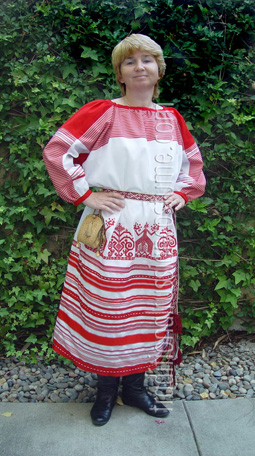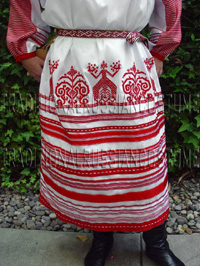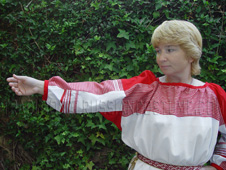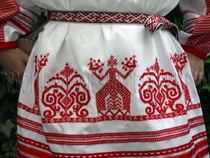
| Outfits >>> Replicas >>> Ritual harvesting dress | ||

|
| |
|
Paradoxically, in Russian villages each "true Christian" person had to have several ritual pagan outfits for different occasions. Style and decoration of such a costumes were archaic. They were kept with no changes from ancient times till mid-1900's. Ritual costumes were made of a homemade bleached (so called "two-year") linen as a base and red-colored one as a decoration. Striped parts of a dress were made of a special homemade cloth called pestryadina ("motley"). Its warp yarn was linen, and its woof could be wool, cotton, or hemp. In accordance to ethnographic records of 1880s, each region (often even each village) in Russia had its own style of clothing at that time. So, the harvesting dress of Yaroslavl region looks totally different from the harvesting dress of Vologda region.
This dress is the ritual outfit ALL village women (married and non-married yet) supposed to be dressed for the first day of harvesting. The dress is of so-called "northern" style: rectangular paliki (red shoulder details), cuffs with no frill, red astovica (armpit details), and red
"fire lane" (neck-wrist-bottom).
According to agricultural beliefs, Mother Earth literally gives birth to a harvest and spends some of Her power for it. So, harvesting people suppose to give some of their energy back to Mother Earth (as a reward). If they wouldn't do so, nothing would grow next year. Red color in Russian tradition symbolizes blood and vitality, so the harvest dress's bottom is completely covered with red stripes. It depicts the flow of vital energy from a woman to Mother Earth. In Yaroslavl region a dress's bottom decoration is especially rich (it could be one-and-a-half yard wide).
| ||
Sources (in Russian)
| ||


